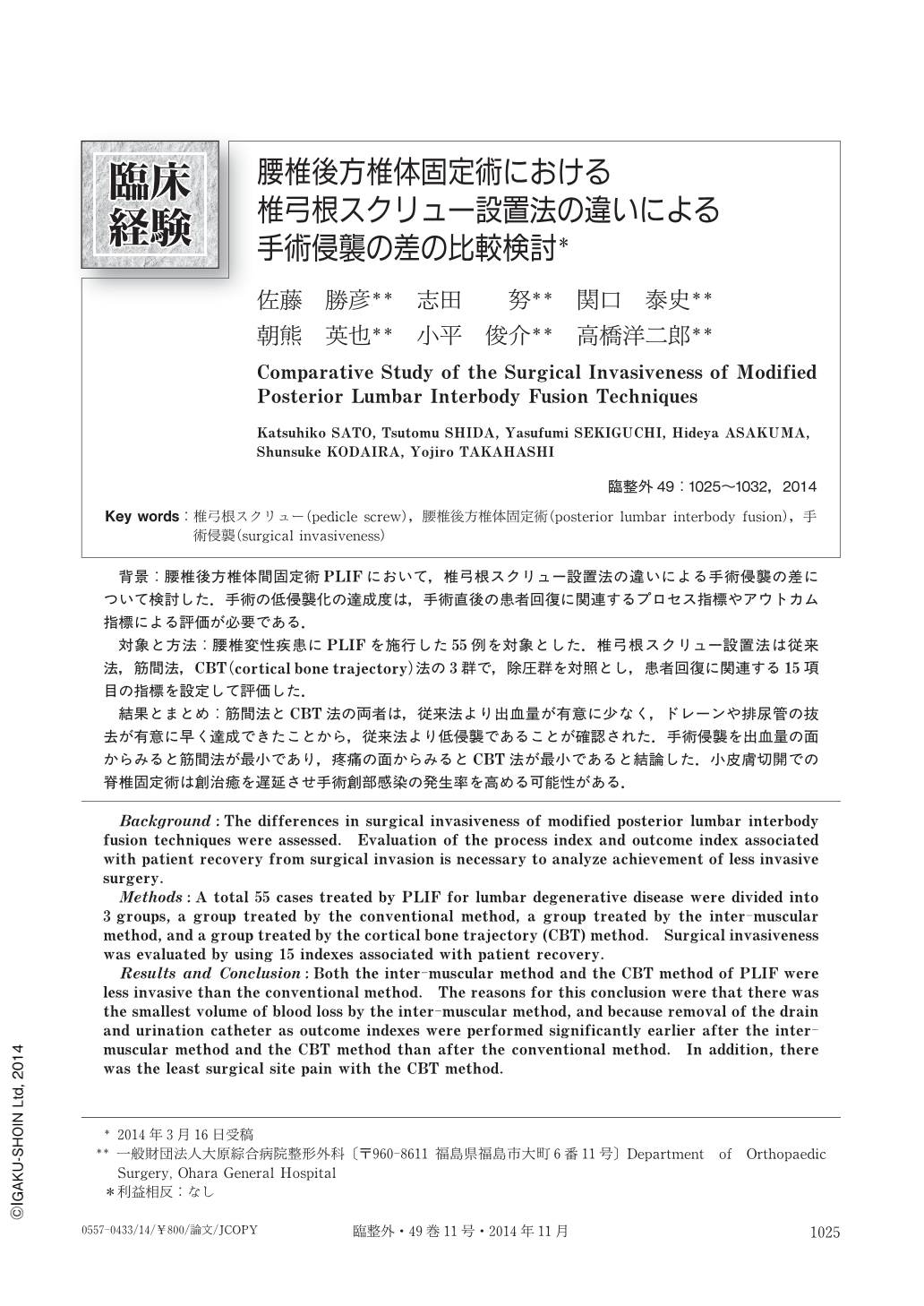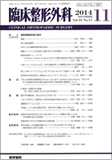Japanese
English
- 有料閲覧
- Abstract 文献概要
- 1ページ目 Look Inside
- 参考文献 Reference
背景:腰椎後方椎体間固定術PLIFにおいて,椎弓根スクリュー設置法の違いによる手術侵襲の差について検討した.手術の低侵襲化の達成度は,手術直後の患者回復に関連するプロセス指標やアウトカム指標による評価が必要である.
対象と方法:腰椎変性疾患にPLIFを施行した55例を対象とした.椎弓根スクリュー設置法は従来法,筋間法,CBT(cortical bone trajectory)法の3群で,除圧群を対照とし,患者回復に関連する15項目の指標を設定して評価した.
結果とまとめ:筋間法とCBT法の両者は,従来法より出血量が有意に少なく,ドレーンや排尿管の抜去が有意に早く達成できたことから,従来法より低侵襲であることが確認された.手術侵襲を出血量の面からみると筋間法が最小であり,疼痛の面からみるとCBT法が最小であると結論した.小皮膚切開での脊椎固定術は創治癒を遅延させ手術創部感染の発生率を高める可能性がある.
Background:The differences in surgical invasiveness of modified posterior lumbar interbody fusion techniques were assessed. Evaluation of the process index and outcome index associated with patient recovery from surgical invasion is necessary to analyze achievement of less invasive surgery.
Methods:A total 55 cases treated by PLIF for lumbar degenerative disease were divided into 3 groups, a group treated by the conventional method, a group treated by the inter-muscular method, and a group treated by the cortical bone trajectory (CBT) method. Surgical invasiveness was evaluated by using 15 indexes associated with patient recovery.
Results and Conclusion:Both the inter-muscular method and the CBT method of PLIF were less invasive than the conventional method. The reasons for this conclusion were that there was the smallest volume of blood loss by the inter-muscular method, and because removal of the drain and urination catheter as outcome indexes were performed significantly earlier after the inter-muscular method and the CBT method than after the conventional method. In addition, there was the least surgical site pain with the CBT method.

Copyright © 2014, Igaku-Shoin Ltd. All rights reserved.


